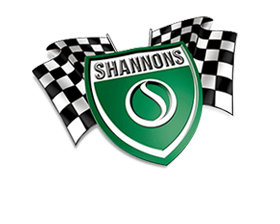2020 Shannons Autumn Timed Online Auction
Lot
77
1986 Jaguar XJS-C V12 Cabriolet
Sold: $27,000
Bids Close: Wednesday 3 June 8.15pm AEST*
Location: Sydney
Sold
Specifications
| Engine | V12, 5343cc |
|---|---|
| Gearbox | 4-speed automatic |
| Body Work | Cabriolet |
| Colour | Blue |
| Interior | Bone |
| Trim | Leather |
| Wheels | Cast Alloy |
| Brakes | Discs |
Description
This lot is no
longer
available
Introduced at the 1975 Frankfurt Motor Show, Jaguar’s XJ-S ushered in a new generation of GT motoring, combing elegant styling, superlative performance and exceptional luxury. The XJ-S remained in production for the best part of two decades – testament to both the inherent quality of the design and its enduring popularity. Powered by the superbly refined and smoothly powerful 60-degree all-alloy V12 first seen in the ‘Series 3’ E-type, the XJ-S’s engine featured a single overhead camshaft per bank, fuel injection and developed 285 bhp from 5.3-litres, providing effortless performance. The XJ-S was one of only a handful of production cars capable of reaching the magic 150mph (250 km/h) on sale in the mid-1970s – to go any faster one had to step up to expensive supercars like the Aston Martin Vantage, Porsche Turbo or Italian exotics. The Big Cat also entered popular culture, with Simon Templar swapping his Volvo P1800 for a white XJ-S in the television series “The Return of the Saint”. In the wake of the fuel crisis, Jaguar countered criticism that the V12 was too thirsty by releasing a revised model (badged as the HE - for High Efficiency) in 1981, featuring a new high compression cylinder head design delivering a noticeable improvement in fuel economy without sacrificing performance. The HE’s interior also benefited from the addition of wood and chrome not found in the 1970s original. Jaguar further broadened the XJ-S’s appeal with two significant new models in 1983, the 3.6-litre six-cylinder and the open-topped SC. The American market had been clamouring for a convertible XJ-S for some time but Jaguar initially devised a compromise - with fixed side rails and a removable roof panel, the SC described as a cabriolet by Jaguar’s marketing department, offering the same versatility that made the likes of Triumph’s Stag so popular. Better specified than their fixed-head counterparts, the XJ-SC’s bodyshell was actually converted by the Park Sheet Metal Company in Coventry, then taken to Browns Lane for painting and, once the mechanicals and interior trim were installed, sent to Aston Martin’s Tickford Body Works for the roof and hood to be fitted. Further developments included the adoption of anti-lock brakes and a range of interior enhancements from 1986. The XJ-S simply got better with age and the public certainly agreed, with sales increasing as the years went by. The XJ-S represents excellent value for money and most pundits agree prices can only increase for good specimens – while ownership brings great rewards.

























